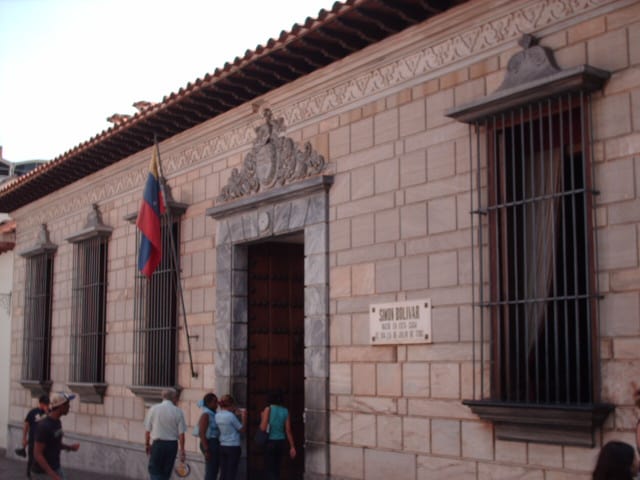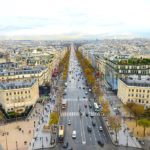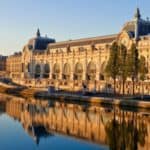Top 15 Facts about Simon Bolivar
Simon Bolivar is a Venezuelan military and political leader who is famous for founding the Republic of Bolivia and the Gran Colombia. Gran Colombia was compromised of present-day Colombia, Venezuela, Ecuador, Panama and Peru. He was known as the El Libertador meaning “The Liberator” in many Latin American countries.
El Libertador was born on 24th July 1783 in Caracas, Venezuela to a wealthy aristocratic family. Unfortunately, Bolivar lost his parents at a very young age. In his adult life he was drawn to the independence movements taking place in South America after the death of his young wife. His dream was to free South America from the Spanish Empire and unite the territories of South America.
Here are 15 interesting facts about Simon Bolivar.
1. His actual name is quite long.
He was the second son and fourth child of Don Juan Vicente Bolívar y Ponte and his wife Maria de la Concepción Palacios y Blanco, yes the parents also have long names. He was born on 24th July 1783 and his full name was Simón José Antonio de la Santísima Trinidad Bolívar y Palacios.
It was a common practice during this era for people to have long names as it was believed that the more names you had the less likely you were to be attacked by evil spirits. However, this came to an end in the 19th century with naming regulations being introduced.
2. Simon Bolivar was extremely wealthy before the Wars of Independence.
The Bolivar family was one of the richest families in Venezuela. Their family wealth came from owning gold and copper mines. Simon had a privileged upbringing and education this is well depicted by him travelling to Europe, the fashion trend for people in his statues, for his studies and military training.
With his wealth, Simon was able to finance many of the independence movements that liberated many of the Latin America territories. This resulted in him losing his social status which he never regretted as he truly believed in a free and united Latin America. He also lost much of his family wealth to this patriotic course.
3. He dedicated his wealth to the independence movements in South America.
Simon Bolivar financed and led many independent movements across Latin America against the Spanish. He was very passionate about seeing a free united Latin America to the point of using up all his family wealth for this course. It is said that at the time of his death in 1830 due to tuberculosis he was a very poor man. He was able to achieve his dream of a free Latin America but his dream of a united Latin America did not last.
4. The death of his wife changes the course of his life.
Bolivar was only 18 years when he married Maria Teresa del Toro Alayza who was 20 years. The two met in Madrid and courted for two years before getting married on 26th May 1802. In July of the same year, the young couple moved back to Bolivar’s home town, Caracas. While in Caracas Maria contracted yellow fever and died on 22nd July 1803.
Despite still being a young man when his young bride died Bolivar vowed to never marry again in his devastation, a promise he kept despite having numerous lovers. In 1804, he joined his mentor Rodriguez in Europe. To distract Bolivar from the loss of his wife Rodriguez pushed him to the great course of liberating Venezuela from Spanish rule. This marked a turning point in Bolivar’s life, from being a depressed widower to becoming a liberator.
5. He handed over Francisco de Miranda to Spanish authorities.
Francisco de Miranda was a Venezuelan revolutionary who had attempted to start an independence movement in 1806 to liberate his homeland but failed horribly. After that he dedicated himself to achieving independence for Latin America and aided in the formation of the First Venezuelan Republic. In 1810 Bolivar convinced Francisco to return to Venezuela and join the War of Independence.
However, once in Venezuela Miranda thought the revolution was lost when Spanish Captain, Domingo de Monteverde, rapidly advanced into the territory of the revolution. In July 1812 Miranda signed a capitulation agreement with the Spanish Captain. Bolivar, who was acting as a colonel, saw this as treacherous and arrested Miranda. Bolivar turned Miranda to the Spanish who imprisoned him. Miranda died four years later while still in a Spanish Prison.
6. Simon Bolivar issued the famous War to Death decree in 1813.
After the defeat of the revolution, the Spanish soldiers massacred and committed severe crimes in Venezuela. This drove Bolivar to kick-start his campaign of reclaiming Venezuela from New Grenada, present-day Colombia.
In his campaign, he made his famous Decree of War to the death in February 1813. The decree permitted the killing of any civilian born in Spain who did not actively participate in achieving self-governance in Latin America. The decree exonerated the Latin Americans who committed these killings and mayhem.
In August 1813 Bolivar was able to take back Caracas but this victory was short-lived as those who favored Spanish rule defeated Bolivar’s forces and recaptured the city.
7. He ended up being the worst enemies with his best friend.
Francisco de Paula Santander, a New Granadan General, was known to be very close friends with Bolivar. They fought side by side in the critical Battle of Boyacá. Bolivar is said to have so much faith in Francisco such that he appointed him his vice-president when he was president of Gran Colombia.
However, the two fell apart when their views on how Gran Colombia should be governed differed. Bolivar believed that the nation a strong hand while it grew but Santander believed the nation needs laws and democracy to grow.
The relationship between the two got much strayed such that in 1828 Santander was accused and convicted of conspiring to assassinate Bolivar. Out of respect for the relationship they had shared before Bolivar pardoned Santander who went into exile.
8. He was very strategic and determined leader who did the unexpected.
Bolivar was known to think very fast on his feet and make risk making decisions which in most instances paid off. For instance in 1813, when the Spanish forces were closing in around him he and his army did the unexpected when they marched forward and captured the city of Caracas.
He was also known to favor surprise attacks. In 1819, his army attacked the Spanish in New Granada and captured Bogotá. The attack came as a surprise to the Spanish such that they fled and left money behind.
He was determined to achieve his goal that nothing could stop him. In 1824, he led his army in bad weather in the Peruvian highlands to the battle of Junín.
9. Two countries are named after him.
In 1799, following the death of his parents, Bolivar went to Spain to continue with his education and military training. From this training, he was able to grow up to be one of the greatest heroes of South America independence movements.
Many Latin American countries have honored him in one way or another but the greatest honor was having not one but two countries named after you, Venezuela whose official name is the Bolivarian Republic of Venezuela and the nation Bolivia.
10. Despite participating in many battles he died of natural causes.
In most cases we would have expected that Bolivar would die in one of the many battles he participated in, but he died of natural causes. He was also able to survive numerous assassination attempts to his life and managed to walk away without any life-threatening injuries from any battle. However, despite cheating death on many occasions on 17th December 1830 he died of tuberculosis at the young age of 47.
11. He was a child when his parents passed away.
At the age of two, Bolivar’s father passed away from tuberculosis, and at the age of nine, her mother too passed away from the disease. He was given to one of his relatives to look after, but they didn’t get along.
Hipólita, a family slave, cared for him as a young child and raised him in many ways. She is “the only mother I have known” because of this, he says.
12. Bolívar was part of the foundation of the first union of independent nations in Latin America
Bolvar believed that by uniting disparate nations, Latin America will be able to successfully challenge the US and European governments. Thus, when Gran Colombia was established in 1819, it comprised parts of Guyana, Peru, and Brazil in addition to the lands of Venezuela, Ecuador, Colombia, and Panama.
Gran Colombia was unsuccessful, and it was disbanded in 1831. Bolvar was charged with aiming to create a perpetual dictatorship, which prevented it from being successful. He was the only president between 1819 and 1830, and the administration followed a centralist paradigm.
13. He told his general to burn the collection of his speeches, papers, and letters, but the general disobeyed.
Bolivar gave the order to destroy the remaining copies of his letters, writings, and speeches just before he passed away to General Daniel F. O’Leary. O’Leary disobeyed, and as a result, we now have a wealth of information on his ideology and way of thinking. His correspondence with his most well-known lover, Manuelita Saenz, was documented in this archive as well. These letters were collected and made public in 2007.
14. Simon Bolivar Was a Notorious Womanizer.
While in Spain as a young man, Bolvar briefly wed, but the couple’s spouse passed away soon after. He chose a protracted string of flings with the women he met while running for office rather than getting remarried.
He had multiple mistresses at the same time, but Manuela Saenz, the Ecuadorian wife of a British doctor, was the closest thing to a long-term lover he ever had. However, he left her behind while he was campaigning. One night in Bogotá, Saenz saved his life by assisting him in escaping several assassins dispatched by his enemies.
15. He didn’t always win
Bolivar was an excellent leader and general who undoubtedly won many more wars than he lost. He was not impervious, though, and he did occasionally lose.
Bolivar and Santiago Mario, another prominent patriot general, were routed by royalists fighting for Spanish leader Tomás “Taita” Boves at the Second Battle of La Puerta in 1814. The Second Venezuelan Republic would eventually fall, partially as a result of this defeat.
Planning a trip to Paris ? Get ready !
These are Amazon’s best-selling travel products that you may need for coming to Paris.
Bookstore
- The best travel book : Rick Steves – Paris 2023 – Learn more here
- Fodor’s Paris 2024 – Learn more here
Travel Gear
- Venture Pal Lightweight Backpack – Learn more here
- Samsonite Winfield 2 28″ Luggage – Learn more here
- Swig Savvy’s Stainless Steel Insulated Water Bottle – Learn more here
Check Amazon’s best-seller list for the most popular travel accessories. We sometimes read this list just to find out what new travel products people are buying.























